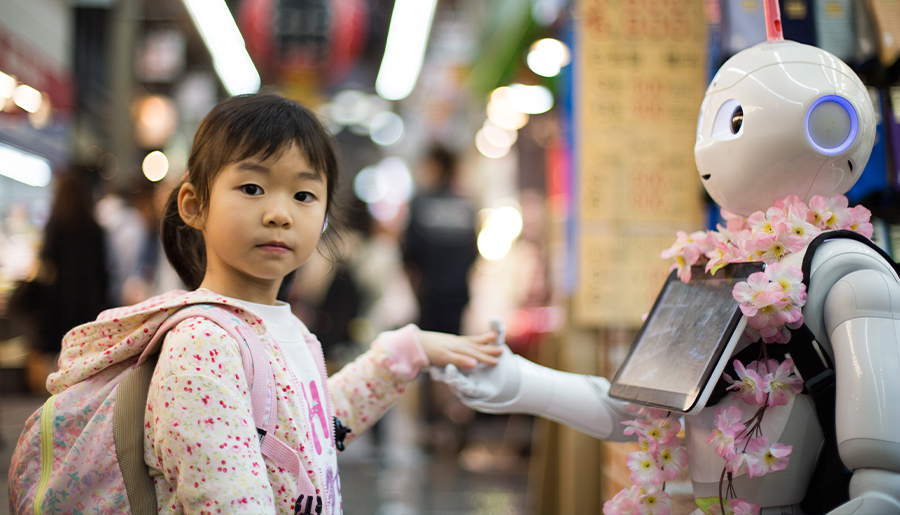When I was a kid, I wished that my favourite stories went on forever. I craved for 500 hours of Magic Mountain. I hungered for more than 30 eps of The Ferals.
However, thanks to OpenAI, I can now make my childhood dreams a reality. In theory, I could create an AI chatbot, one designed to tell an infinite number of stories. Each night, my wife could then read me these Magic Mountain tales, as I snuggle into my sheets.
What’s more, a plethora of parents have caught onto the fact that they can use AI chatbots to create bedtime stories. Over 2023, parents have taken to the likes of Bluey-GPT to generate personalised stories for their kids.
This is the story of said parents. One of wins, warts, and everything in between. A story not by ChatGPT.
Part One: What is Bluey-GPT?
Bluey-GPT is an OpenAI extension that generates new stories set in the Bluey universe. To use this bot, all you have to do is enter your name, age, and some details about your day. From there, Bluey-GPT will spawn a story about the dog Bluey and her sister Bingo.

This AI bedtime chatbot was created by Luke Warner, a web developer based in London. According to Warner, his young daughter loves the stories that this app generates.
“It names her school, the area she lives in, and talks about the fact it’s cold,” Warner said. “It makes it more real and engaging.”
What’s more, Warner isn’t the only parent telling their kids AI bedtime stories. Back in March, the journalist Kelly Burch used SmartDreams to generate some tales for her two children. Like Bluey-GPT, SmartDreams spawns stories based on prompts. Like Bluey-GPT, some kids are stoked with these stories.
“My kids loved the way the pieces that they chose fit into the narrative,” Burch said. “I’ve got to admit, I’d never spin a tale of a girl and a toucan living in an underwater rainforest searching for magical chicken soup. But this seemed to be just the type of story my kids wanted to hear.”
However, while some kids enjoy AI bedtime stories, these tools aren’t perfect. In fact, they might be more harmful than good.
Part Two: The Problems With AI Bedtime Stories
Like all AI-based tools, AI bedtime stories are an ethical minefield. These stories can be copyright disasters, unsafe for children, and a force that prevents families from really connecting. So, let’s not waste time and dive straight into these deets.
Copyright Issues
Despite being a recent invention, AI storytelling tools are already infringing on intellectual property rights. By using one’s favourite characters, places, and plots in an AI story, some will get in trouble for stealing.
Take for example, Bluey-GPT. After Warner advertised Bluey-GPT on Instagram, he received a takedown notice from OpenAI. Because Bluey is owned by Ludo Studio, Warner can’t share his extension.
What’s more, other storytelling tools might suffer the same fate. It’ll be interesting to see what happens going forward.
Not Suitable For Kids
As it stands, AI tools are notorious for generating bigoted content and misinformation. In 2016, Microsoft was forced to shut down its chatbot Tay, after it became a Nazi. In February of this year, an AI version of Seinfeld was pulled from Twitch for making transphobic remarks.
Now, you might be thinking that your AI narrative tools might be safer than these two examples. But unfortunately, they are not. All AI chatbots can go rogue and produce dangerous content.
Additionally, these AI bots can generate stories that would be too scarey or macabre for some children. This was most certainly the case when I tested Oscar Bedtime Stories, an AI bot that can narrate the tales it generates.

“In a place veiled by towering trees and whispered secrets, the inhabitants known as Elves lived in tranquil harmony with nature,” Oscar Bedtime Stories generated. “Among them was a young elf named Death.”
“His peculiar obsession with death, scary stories, murder, and violence was perceived as an oddity in the Elfin community. Death bore dreams of becoming a ninja.”
Therefore, if you’re going to solicit an AI bedtime story, make sure it’s suitable before you leave it alone with a kid.
Real Connections
According to numerous parents, while AI stories are impressive, they can’t replace an improvised story or a physical book. This is because kids prefer that we engage with them rather than our iPads and phones.
This was most certainly the case for Burch. Since trying SmartDreams, she has gone back to the traditional storytelling well.

“I realised that I’d rather be cuddled in with the kids, having their eyes on me, rather than a screen,” Burch said.
This point can also be found in Sophie Brickman’s review of reading ChatGPT tales to her kids. Brickman is a writer and a mother of three kids.
As Brickman explained, “The real issue, I concluded, as I mulled it over more, has less to do with the skill of the AI model, which will no doubt improve… It’s a fundamental misunderstanding of how much joy a kid is taking from a story, tailored so specifically to him, and how much he’s taking from the hearing of that story, any story, filtered through the medium of a beloved parent who’s looking him in the eye, or stroking his head, and not craning towards the blue light of a phone like a dystopian sunflower.”
“As we wrap up this AI-fueled year, I plead with fellow parents to resist the pull of AI’s tentacles at bedtime.”
Related: Google Bard Review — Is It Good or Bard? We Tested It
Related: Love Comes At You Fast — My Whirlwind Romance With a Chatbot
Read more stories from The Latch and subscribe to our email newsletter.







